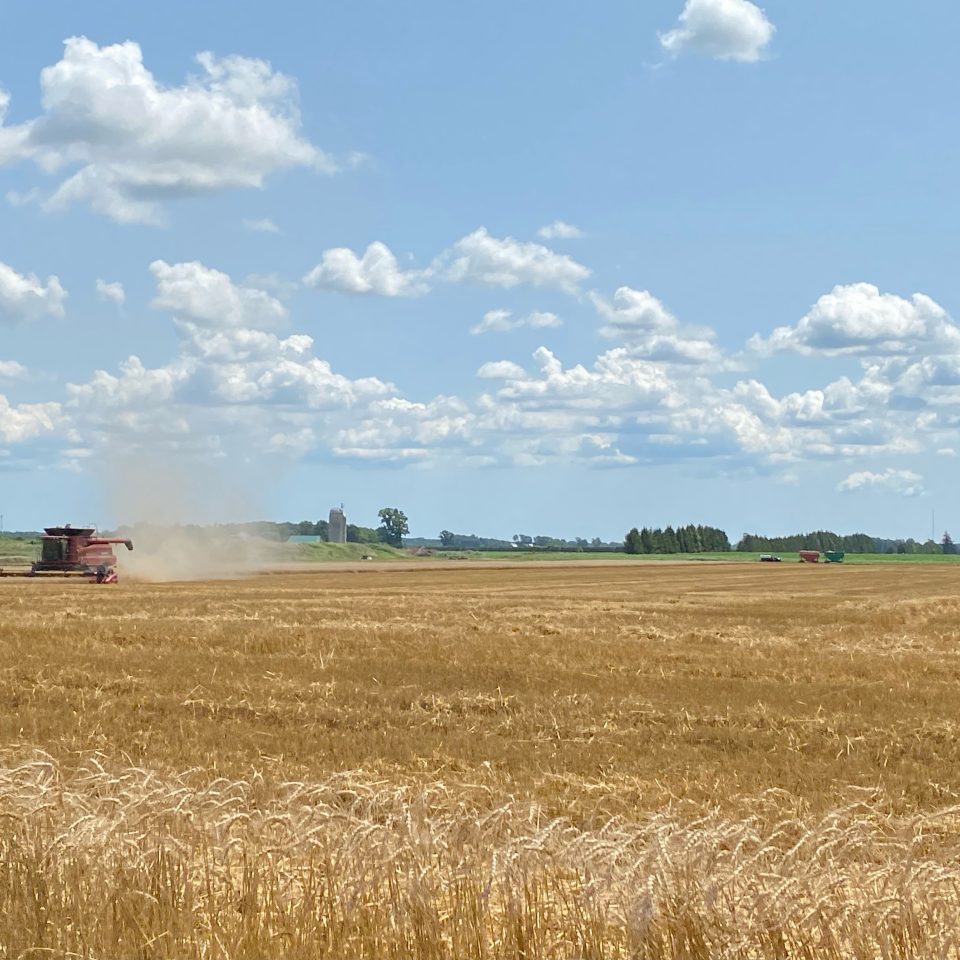
Many of you are out in the fields harvesting your wheat…albeit between our extreme weather we have been experiencing in Ontario. Massive rain fall, to hot and humid weather, to more rain – we have been getting it all from mother nature. You might be thinking, when out in the field, what do I need to do after wheat harvest? There are several essential tasks to ensure the smooth continuation of your agricultural operations and prepare for future crops. Here are some key activities that you the farmer should consider undertaking after wheat harvest:
- Storage and Transportation: The harvested wheat needs proper storage to maintain its quality and prevent spoilage. Consider storing the wheat in silos, bins, or grain elevators designed to protect it from moisture, pests, and temperature fluctuations. If the wheat is to be transported to other locations, make arrangements for its safe shipment.
- Field Cleanup: Once the wheat is harvested, the next step is to clean up the fields by removing straw, chaff, and any leftover debris. This helps prepare the fields for the next crop and minimizes the risk of pest and disease carryover.
- Soil Preparation: After harvest, it is time to prepare the soil for the next planting season. An option may be to till the land to incorporate crop residues, loosen the soil, and facilitate nutrient absorption by the next crop.
- Soil Testing and Fertilization: Conduct a soil tests to assess nutrient levels and pH. Based on the test results, you will know appropriate fertilizers to replenish soil nutrients for the upcoming crop.
- Crop Rotation Planning: Crop rotation is an essential practice to maintain soil health and break disease cycles. After wheat harvest, plan your crop rotation strategy, selecting suitable crops for the next planting season.
- Maintenance and Repair: Inspect and maintain your harvesting and planting equipment to ensure they are in good working condition for the next planting season. Also consider performing any necessary repairs or replacements.
- Weed Control: As weeds can compete with the next crop for nutrients and space, you may want to implement weed control measures, such as herbicide application or manual weeding.
- Pest and Disease Management: Farmers monitor their fields for any signs of pests or diseases and take appropriate measures to control them. This could involve applying pesticides or adopting integrated pest management (IPM) practices.
- Planning for Cover Crops: Planting cover crops after wheat harvest is a great way to protect the soil from erosion, improve soil health, and add organic matter.
- Financial and Record-Keeping Tasks: Not always the most fun job on the farm, however, often farmer’s take this time to review their financial records and analyze the profitability of their wheat harvest. This would also be a great time to plan budgets for the next season, considering expenses for inputs like seeds, fertilizers, and fuel.
- Market Analysis and Sales: Farmers assess market conditions and make decisions about selling their harvested wheat. They may consider storage costs, market prices, and their own needs before selling their grain.
- On-Farm Improvements: Depending on the resources available, farmers may invest in on-farm improvements such as infrastructure upgrades, irrigation systems, or sustainable practices.
By diligently carrying out these post-harvest tasks, you can set the stage for successful future crops and maintain the sustainability and productivity of your agricultural operations.
We want to grow together. Book now your soil sample, talk to us about cover crops, crop planning and more! At Sylvite we want to be your partner, so get in touch and allow us to help you with your after wheat harvest next steps.